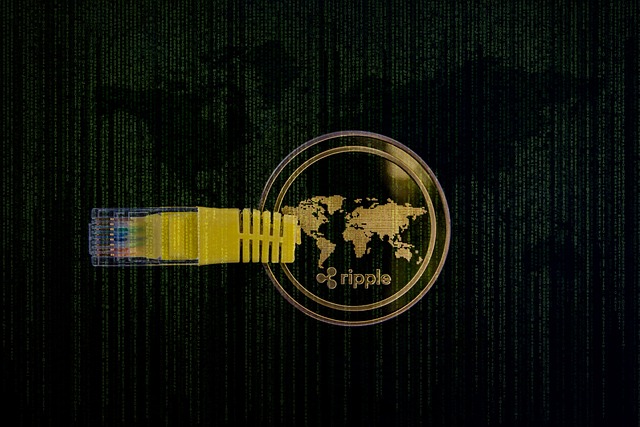How to Buy Crypto on XRP Ledger: An In-Depth Guide
Author: Jameson Richman Expert
Published On: 2025-08-27
Prepared by Jameson Richman and our team of experts with over a decade of experience in cryptocurrency and digital asset analysis. Learn more about us.
Purchasing cryptocurrency on the XRP Ledger (XRPL) has seen a significant rise in popularity, driven by its unique combination of high transaction speeds, minimal fees, and a decentralized, scalable architecture. Unlike traditional blockchain networks that often struggle with congestion and high costs, XRPL offers a highly efficient platform optimized for fast, cost-effective digital asset exchanges. Whether you're new to cryptocurrencies or an experienced trader seeking to diversify your portfolio, understanding the detailed mechanics of acquiring, managing, and securing assets on the XRPL can open up new financial opportunities. This comprehensive guide explores the core concepts, step-by-step procedures, security best practices, and advanced strategies to help you navigate the XRPL ecosystem with confidence and efficiency.

Understanding the XRP Ledger and Its Core Advantages
The XRP Ledger (XRPL) is an open-source, permissionless blockchain developed by Ripple Labs, designed with the primary goal of transforming cross-border payments and financial settlements. At its core, XRPL uses a unique consensus protocol known as the XRP Ledger Consensus Algorithm, which differs fundamentally from proof-of-work (PoW) or proof-of-stake (PoS) mechanisms. This protocol involves a network of trusted validator nodes that agree on transaction validity and ordering, enabling near-instant finality typically within 3 to 5 seconds—significantly faster than Bitcoin or Ethereum.
One of the key strengths of XRPL is its ability to handle over 1,500 transactions per second (TPS), providing scalability that supports microtransactions, remittances, real-time payment systems, and enterprise-grade tokenization projects. This high throughput reduces congestion and delays, even during peak periods, making it suitable for high-frequency trading and global settlement layers.
Transaction fees on XRPL are remarkably low—often less than a fraction of a cent—making it economically viable for frequent uses such as micro-sending or automated trading. The ledger also includes advanced features like escrow accounts, payment channels, and a built-in decentralized exchange (DEX), which facilitate complex financial interactions directly on the blockchain. These functionalities empower users and developers to create innovative financial products, such as tokenized assets, stablecoins, or programmable smart contracts, all within a secure and efficient environment.
Interoperability is another significant benefit, as XRPL seamlessly integrates with multiple exchanges and digital wallets. This interoperability simplifies the process of acquiring, holding, and utilizing XRP and other tokens issued on the ledger. Together, these features position XRPL as a versatile platform suitable for global digital finance, remittance corridors, and enterprise tokenization initiatives.
Step-by-Step Process for Buying Crypto on the XRP Ledger
1. Selecting a Trusted Exchange or Wallet
The first step is choosing a reputable platform that supports XRPL transactions. Leading centralized exchanges such as Binance, MEXC, Bitget, and Bybit are popular due to their high liquidity, robust security protocols, intuitive interfaces, and extensive fiat-to-crypto gateways. These platforms facilitate straightforward fiat-to-XRP conversions, spot trading, staking, and derivatives trading.
If you prefer greater control over your assets and enhanced privacy, XRPL-compatible wallets like Trust Wallet, XRP Toolkit, or hardware wallets such as Ledger Nano S/X and Trezor are ideal. These wallets enable you to hold your private keys securely and manage your assets independently of third-party custodians. When selecting a wallet or exchange, consider factors such as security features, user reviews, transaction fees, and whether they support direct fiat deposits or require pre-funded accounts.
2. Creating and Verifying Your Account
After selecting your platform, proceed with account registration. Most exchanges enforce Know Your Customer (KYC) procedures, which involve submitting documents such as passports, driver’s licenses, or other government-issued IDs, along with proof of address. Completing KYC not only complies with regulations but also unlocks higher withdrawal limits, advanced trading features, and improved security.
Prioritize security by creating a strong, unique password and enabling two-factor authentication (2FA) using trusted authenticator apps like Google Authenticator or Authy. Some platforms may also require email or SMS verification, adding an extra layer of security against unauthorized access.
3. Funding Your Account
Deposit fiat currency through bank transfers, credit/debit cards, or digital wallets supported by the chosen exchange. For example, Binance allows deposits in USD, EUR, and other fiat currencies, which can then be exchanged for XRP. If you already hold cryptocurrencies such as Bitcoin or Ethereum, most exchanges permit crypto deposits, enabling you to trade these assets for XRP via trading pairs like BTC/XRP or ETH/XRP. This flexibility allows strategic entry points depending on market conditions and available assets.
Review deposit fees, processing times, and minimum/maximum deposit thresholds to optimize your capital deployment, especially when planning for large or frequent transactions.
4. Purchasing XRP and Other Cryptos
Navigate to the trading interface and select your preferred trading pair, such as XRP/USD, XRP/EUR, or XRP/BTC. Market orders execute immediately at current market prices, suitable for quick entries. Limit orders allow you to specify a desired purchase price, offering better control and potentially better entry points. Advanced order types like stop-limit, take-profit, and conditional orders enable sophisticated risk management and strategic positioning.
Once your order executes, your XRP will appear in your exchange wallet. For enhanced security and control, you may prefer to transfer your XRP to a personal XRPL-compatible wallet, especially for long-term holdings or participation in advanced ledger features.
Transferring XRP to Your XRPL-Compatible Wallet
After acquiring XRP on an exchange, transferring your tokens to a personal wallet is a vital security step. Initiate a withdrawal by entering your XRPL wallet address and, if applicable, a destination tag (used for transaction identification in certain wallets). Ensure all details are accurate; mistakes can lead to irreversible loss of funds.
The XRPL network's rapid confirmation times—often within seconds—ensure swift settlement. Once your XRP resides in your wallet, you gain full custody and control over your assets, enabling participation in advanced ledger functionalities such as staking, escrow transactions, or utilizing payment channels for microtransactions and instant settlements.

Security Best Practices for Buying and Storing Crypto on XRPL
- Activate 2FA: Enable two-factor authentication on all platforms and wallets to prevent unauthorized access. Use authenticator apps rather than SMS codes for added security.
- Verify Address and Transaction Details: Double-check all wallet addresses and transaction parameters before confirming transfers. Be vigilant against phishing sites and malicious links.
- Choose Reputable Platforms and Hardware Wallets: Rely on well-established exchanges and hardware wallets with transparent security audits, active development, and positive user reviews.
- Safeguard Private Keys and Backup Seed Phrases: Store seed phrases and private keys offline in secure, encrypted locations such as hardware wallets or physical safes. Never share these credentials online or via unsecured communication channels.
- Stay Informed and Vigilant: Keep abreast of security advisories, software updates, and changes in regulations. Be cautious of scams, impersonation, and social engineering attempts targeting crypto holders.
Additional Resources and Advanced Options
To deepen your understanding and utilize advanced features within the XRPL ecosystem, explore these platforms and tools:
XRP Toolkit: An intuitive interface for managing escrow, payment channels, and participating in the decentralized exchange. Useful for deploying multi-signed transactions and automating complex operations.
Bitget: Offers advanced trading options including futures, staking, API integrations, and competitive fee structures, suitable for active traders looking to leverage the XRPL ecosystem’s liquidity.
Bybit: Provides leveraged trading, a user-friendly interface, and strong security features, ideal for traders seeking to amplify their market positions while maintaining safety.
Regularly participating in community forums, webinars, and developer resources such as the XRPL Foundation can also expand your technical knowledge and strategic insights, helping you make informed decisions and innovate within the ecosystem.
Final Thoughts and Best Practices
Mastering the process of buying, managing, and securing crypto on the XRP Ledger requires a combination of technical understanding, platform selection, and security discipline. XRPL’s rapid transaction speeds, low costs, and rich feature set make it a powerful platform for trading, remittances, and developing innovative financial applications. Staying current with technological updates, regulatory developments, and security best practices is essential for maintaining a safe and profitable presence in the network.
By adopting diligent security measures, continuously learning, and leveraging the ecosystem’s advanced tools, you can unlock the full potential of XRP and the XRP Ledger to achieve your financial goals and actively participate in the evolving landscape of digital finance.